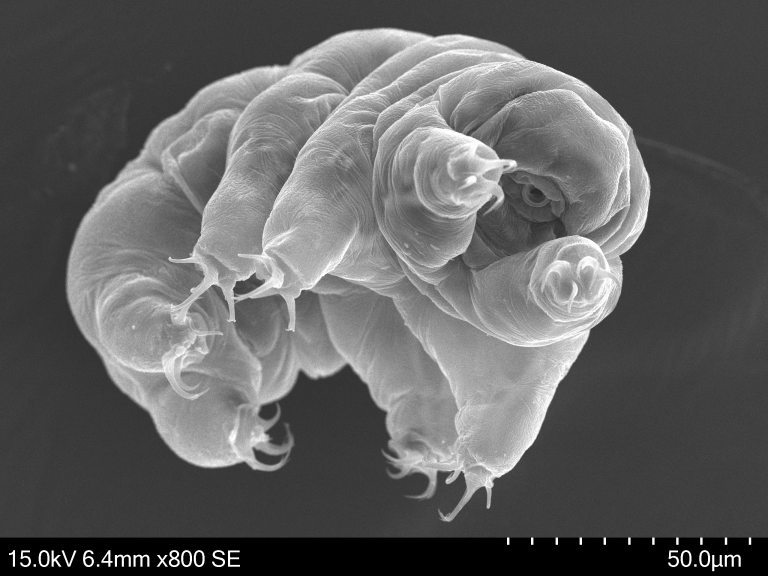Genomics and Physiology of Adaptation
Team presentation
GPA is an interdisciplinary team whose goal is to study different scales of adaptation of microorganisms to environmental constraints. Our goal is to study adaptation by combining techniques ranging from genomics to physiology, molecular genetics and biochemistry. Our current experimental models include yeast, microbial consortia (yeast + bacteria) and tardigrades.
Team leader:
- Jean-Baptiste Boulé, DR CNRS
Team members:
- Emmanuelle Delagoutte, CR CNRS
- Christophe Lavelle, CR CNRS
- Mathilde Courel, MC SU
- Alexandra Joubert, IE CNRS
- Delphine Mazé, IE MNHN
- Valentin Rapon, Doctorant Muséum
Former members:
- Téo Villebasse, M2
- Tom Rakotomanga, M2
- Marine Chambeaudie, Doctorante Muséum
- Carine Amseyan, M2 University Paris-Saclay
- Sarah Derrien, Agro Rennes
- Alban Amoros, Apprenti Inserm
- Ornella Frati, CDD IE Sorbonne Université
- Maxence Blanchet, M2 Université Paul Sabatier (Toulouse)
- Alfredo Lhomme, M2 CRI Paris
- Phong Lan Thao Tran, post doc Marie Curie
- Zoé Terraz, M2 Université de Dijon
- Solène Leprince, master student, M2 Université Paul Sabatier (Toulouse)
- Anne-Claire Verschueren, M2 MNHN
- Nehama Edery, M2 MNHN
- Caroline Pillier, M2 Sorbonne Université
- Astrid Lancrey, PhD Sorbonne Université
Sociological and microbiological study of a microbial consortium: fruit kefir
We have undertaken an interdisciplinary and systematic study of fruit kefir grains, collected from consumers in France and around the world, in order to analyze kefir consumption from a sociological and biological point of view. These ferments, composed of communities of symbiotic microorganisms (yeasts and bacteria), are traditionally used in many countries for the fermentation of sweet juices (generally water with sugar and fresh or dried fruits). The uses remain largely local and the grains are transmitted by exchange or sale between individuals. The originality of the project is to combine sociological, microbiological and genomic approaches to characterize the diversity of these consortia as well as their specific adaptations to the establishment and maintenance of the microbial consortium and the fermentation of various sugar sources. This study holds the potential for discoveries in fundamental and applied fields, in particular food and health.

kefir microbes
Dynamics of the adaptation of microorganisms to environmental challenges at the physiological, metabolic and genomic scale
Understanding the factors influencing the emergence, diversity and stability of microbial communities is an important question in ecology and evolution. We are studying, at different scales, the adaptation of populations of microorganisms to variable environments. The concept of adaptation is taken here in a broad sense, from phenotypic to genetic. The team set up bioreactors to cultivate populations of microorganisms over a long period of time in a controlled environment. These experimental system makes it possible to finely and automatically control the temporal structure of the growth environments of microbial communities, as well as the frequency or intensity of biotic and abiotic stresses to which we wish to dynamically study adaptation. They offer the advantage of being able to study in the same experiment several scales of the same phenomenon: physiological, population and molecular, in real time. The goal is to understand the relationship between the phenotypic plasticity of microbial populations and their ability to change the genomic structure of the population in response to environmental stresses.
image
Physiological and molecular aspects of the adaptation of tardigrades to their environment
Tardigrades are microscopic animals belonging to the Ecdysozoan clade. They colonized all the ecosystems of the planet (marine or freshwater sediments, mosses, lichens, sand …). They have developed exceptional resilience capacities. They are indeed able to withstand extreme conditions of temperature, pressure and radiation, in an active or cryptobiotic form.
In the laboratory, we maintain two lineage of tardigrades: Hypsibius exemplaris and Acutunctus antarcticus, two limnoterrestrial species, the first living in our latitudes, the second in Antarctica. Our research focuses on the mechanisms that these animals have developed to manage stress (e.g. stress induced by environmental toxins) and on their ability to perceive their environment (light, colors, food, etc.). Our analysis methods are multi-scale, ranging from “tracking” of tardigrades (to analyze the response of tardigrades to a visual stimulus), to the purification of their DNA (to highlight possible damage following stress), through light and electron microscopy techniques (to detect possible structural reorganizations of the cell following stress). This multidisciplinary strategy allows us to gain a comprehensive and specific understanding of the physiology of tardigrades.

Acutunctus antarcticus.
Main collaborations:
Selected references:






